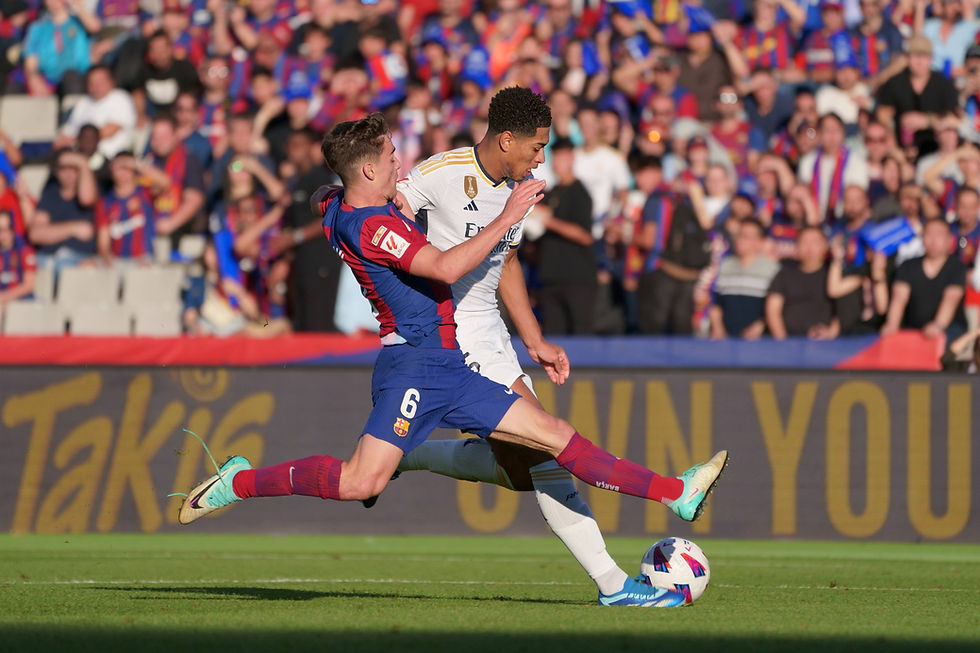MLB with a Salary Cap: A Hypothetical Look At An Alternate Baseball Reality
- Michael Moore
- May 31
- 3 min read

Have you ever wondered what MLB would look like with a salary cap? As a lifelong Yankees fan already aware of this issue, I've seen teams like the Dodgers and Mets recently outspend everyone, making me think about this even more than I would like. Unlike the NFL, NBA, and NHL, MLB doesn't have a salary cap. Instead, it uses a luxury tax system that penalizes teams exceeding a set payroll threshold, with the tax rate increasing for consecutive years over the limit. This has led to massive spending gaps, with the Dodgers ($337M), Mets ($324M), and Yankees ($289M) at the top, while teams like the White Sox ($67M), Marlins ($68M), and Athletics ($74M) are at the bottom in 2025 payrolls. The difference between the second and third highest payrolls (Mets and Yankees) alone is $35 million. Many fans worry about the future of the sport if this continues.
A salary cap would prevent high-spending teams from dominating and encourage lower-spending teams to invest more in their rosters, fostering greater league parity.
For this speculative exercise, I've set a hypothetical MLB salary cap at $200 million and a floor at 90% ($180 million), considering MLB's 2024 revenue of $12.1 billion and a 26-player roster size.
Here's how current 2025 payrolls would stack up against this hypothetical cap:
Team | 2025 Payroll | Cap Floor (180M) | Ceiling (200M) |
Los Angeles Dodgers | $337,000,000.00 | -$137,000,000 | |
New York Mets | $324,000,000.00 | -$124,000,000 | |
New York Yankees | $289,000,000.00 | -$89,000,000 | |
Philadelphia Phillies | $279,000,000.00 | -$79,000,000 | |
Toronto Blue Jays | $247,000,000.00 | -$47,000,000 | |
Houston Astros | $219,000,000.00 | -$19,000,000 | |
Texas Rangers | $217,000,000.00 | -$17,000,000 | |
Atlanta Braves | $214,000,000.00 | -$14,000,000 | |
San Diego Padres | $210,000,000.00 | -$10,000,000 | |
Boston Red Sox | $199,000,000.00 | ||
Chicago Cubs | $193,000,000.00 | ||
Los Angeles Angels | $193,000,000.00 | ||
Arizona Diamondbacks | $181,000,000.00 | ||
San Francisco Giants | $170,000,000.00 | $10,000,000.00 | |
Baltimore Orioles | $161,000,000.00 | $19,000,000.00 | |
Seattle Mariners | $152,000,000.00 | $28,000,000.00 | |
Minnesota Twins | $146,000,000.00 | $34,000,000.00 | |
Detroit Tigers | $143,000,000.00 | $37,000,000.00 | |
St. Louis Cardinals | $135,000,000.00 | $45,000,000.00 | |
Colorado Rockies | $125,000,000.00 | $55,000,000.00 | |
Kansas City Royals | $119,000,000.00 | $61,000,000.00 | |
Washington Nationals | $114,000,000.00 | $66,000,000.00 | |
Cincinnati Reds | $113,000,000.00 | $67,000,000.00 | |
Milwaukee Brewers | $108,000,000.00 | $72,000,000.00 | |
Cleveland Guardians | $100,000,000.00 | $80,000,000.00 | |
Pittsburgh Pirates | $90,000,000.00 | $90,000,000.00 | |
Tampa Bay Rays | $90,000,000.00 | $90,000,000.00 | |
Athletics | $74,000,000.00 | $106,000,000.00 | |
Miami Marlins | $68,000,000.00 | $112,000,000.00 | |
Chicago White Sox | $67,000,000.00 | $113,000,000.00 |
Only four teams—the Red Sox, Cubs, Angels, and Diamondbacks—fall within this proposed cap. While the Red Sox are underperforming, the D'Backs and Cubs are competitive playoff teams. Surprisingly, 17 teams are currently under the proposed cap floor, indicating a significant amount of underspending across the league. For instance, the Chicago White Sox would need to nearly triple their payroll to reach the cap floor. Conversely, the Dodgers and Mets would need to cut their payroll by almost 25% to get to the ceiling.
Here’s how the top five teams over the cap might adjust:
Dodgers: They'd need to cut $137 million, likely meaning players like Mookie Betts or Freddie Freeman would be gone. Additions like Teoscar Hernandez, Blake Snell, and Michael Conforto likely wouldn't happen, and Max Muncy and Tanner Scott could be cut.
Mets: Juan Soto's $61 million salary wouldn't be an option. They'd probably need to part with Starling Marte, Edwin Diaz, and Jeff McNeil, or choose between Pete Alonso and Francisco Lindor.
Yankees: Currently just under $300 million, they wouldn't sign Max Fried or trade for Cody Bellinger without shedding Carlos Rodon or DJ LeMahieu.
Phillies: This would be a nightmare for Dave Dombrowski, forcing prospects like Andrew Painter, Aidan Miller, and Justin Crawford into earlier roles to replace key players like Trea Turner, Nick Castellanos, or even Bryce Harper.
Blue Jays: Vlad Guerrero Jr. likely wouldn't receive a large extension. While Anthony Santander might stay, the team would have to lose George Springer, Kevin Gausman, or Chris Bassitt.
A salary cap would drastically alter team compositions and the league's landscape, making more valuable players available to smaller market teams and fostering greater competition as underspending teams would need to offer contracts to attract new free agents.
Michael Moore is a graduate of New York Law School and former member of the school’s Sports Law Society. When he’s not working at the New York Law Department he’s thinking about the intersection of sports and law and when the Knicks or Rangers will finally win a championship.







Eggy Car is a lighthearted physics runner that tests your gentle control. The challenge is maintaining momentum while protecting the fragile cargo from unexpected bumps
MM88 MM88
Go88 Go88
kuwin kuwin
MM88 MM88
iwin iwin
J88 J88
MM88 MM88
Go88 Go88
kuwin kuwin
MM88 MM88
iwin iwin
J88 J88
MM88 MM88
Go88 Go88
kuwin kuwin
MM88 MM88
iwin iwin
J88 J88
MM88 MM88
Go88 Go88
kuwin kuwin
MM88 MM88
iwin iwin
J88 J88